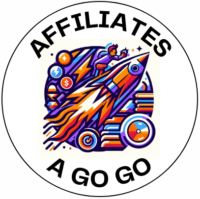
Have you ever wondered if you could turn your passion into profit with affiliate marketing? Guess what? You can. This isn’t just about selling your wares; the crux of affiliate marketing is the sharing of products you believe in which, when someone buys through your referral, you earn a commission. Therefore, having a well-built website is crucial. It’s your digital storefront, your content hub, and frankly, your best salesperson working 24/7/365.
I’m going to give it to you straight. A successful affiliate marketing strategy hinges on your web presence. Your website is your brand; it is your presence online and it is your number one tool for carving out your slice of the digital market. It allows you to publish content catered to your specific audience and a showcase for the products you’ll recommend.
We need to get that digital foundation right, so that’s why we’re here today. By the time we’re done, you’ll understand the essentials of affiliate marketing and why a website isn’t just helpful; it’s non-negotiable for success in this space.
So, let’s just check before we head off. I need to ask, “Are you ready to build that website?” If the answer is, “Yes,” then you’ve found the perfect guide, a roadmap to constructing a website that doesn’t just exist, it performs.
Charting the Course: Strategic Blueprint for Your Affiliate Marketing Website
First things first. Let’s have a brief reminder of finding your niche and therefore audience. This is the first step of our 4-Step Process and it’s the foundation of your strategy. It defines the scope of your content and affiliate products. Your website will be founded on this first step.
So, in bullets:
- Think what your passions are and make a list of them
- Carry out some rough and ready keyword analysis using a tool such as Google Trends
- Match suitable niches with appropriate affiliate programs
Once you have identified your niche, you need to do a little keyword research. In essence, this is understanding what your audience is searching for and tailoring your content to meet those needs. Once you know what your audience is searching for, you will know exactly what to write about. Your list of article topics will forever be growing – you will never run out of ideas.
When your content chimes with readers, they’re going to be more likely to trust your recommendations, click on those affiliate links and buy.
Finally, you will need to choose a domain name and hosting provider. Your domain should reflect your niche and be easy to remember. There is a myriad of providers to choose from. You need one that can guarantee hosting, speed, reliability, and top-notch customer support; one that won’t let you down when your traffic starts to peak.
Design Matters: Crafting an Inviting and Effective Website
OK. Let’s get into the nitty-gritty of building your affiliate marketing website. First of all, can you keep a secret? Shh! The design of your affiliate marketing website can make or break your success. It’s not just about aesthetic appeal; it’s about creating a user-friendly experience that keeps visitors engaged and eager to come back for more.
Which Platform?
You are going to want a website builder or platform that simplifies the process without sacrificing functionality. Let’s have a look at the ins and outs of a few popular platforms like WordPress, Wix, and Shopify, determining which one aligns best with what you want it to do and your technical expertise.
WordPress is an open-source platform. There is a self-hosted version and a managed hosting one. Either way, it is ideal for creating various types of websites. The self-hosted version especially, is highly customizable. However, a greater level of technical knowledge is required than for the self-hosted version.
WordPress has lots going for it:
- Flexibility
- Open-source
- SEO-friendly
- Community support
- Scalability
Though it does have some drawbacks:
- Steep learning curve
- Maintenance
- Hosting and domain required
- Performance
- Security vulnerabilities
Wix is a user-friendly drag-and-drop website builder. It has pre-designed templates which are suitable for beginners, but it does not offer the flexibility of WordPress.
The positives of Wix include:
- User-friendly
- All-in-one solution
- Templates
- App market
- Customer support
Its negatives include:
- Limited flexibility
- Template limitations
- Scalability
- Cost
- SEO limitations
Shopify is an E-commerce-focused platform which is great for building online stores. It offers ease of use and security. It has a great range of features tailored for selling products online.
Its pros include the following:
- E-commerce focused
- Easy setup
- Security
- App ecosystem
- A range of payment options
On the downside:
- Cost
- Customization limitations
- Dependency on apps
- Steep learning curve
- Platform lock-in
Key Point: Choosing something that resonates with you is crucial when customizing your website’s layout, loading time, and branding elements. Maintaining consistency with your chosen niche and target audience helps in cementing your brand identity within the digital world.
Creating high-quality content isn’t just about filling pages with text though. You need to provide real value for money for your audience. Captivating blog posts, insightful reviews, and compelling product comparisons should not only inform but also build your credibility and authority in your niche.
Mobile Devices

A very important point to note is that your website must be optimised for mobile devices from the start. Data from Statista shows that at least half of all website traffic is on mobile devices.
As a result, you need a fast loading time and a light demand on processing power – your phone, smart though it is, does not have the processing power of a desktop or a laptop. Key point: If it takes too long to load, people vote with their fingers and click away.
It’s a relationship of direct proportionality: Improved website speed = improved user experience. Accordingly, as the website owner, you benefit in the following ways:
- Increase user engagement
- Increase average time on site
- Improve mobile SEO
- Attract more local customers
In addition, as mobile screens are so much smaller, an optimised display will not only be viewed better but will also be easier to navigate.
Now, imagine your beautifully designed website attracting visitors who are ready to click on your expertly recommended products. That’s where we start weaving in the fabric of affiliate marketing strategies, seamlessly integrating them into your content, and setting you up for success.
Mastering the Affiliate Arsenal: Integrating Marketing with Finesse
Now we are going to get to the bottom line of why you have built your website. Transforming your website into a revenue-generating machine through affiliate marketing. The triumph of your site is dependent on the savvy application of affiliate marketing strategies. I’m going to show you how to do just that.
You will have done some research about this already to get an idea of the viability of your chosen niche. Hopefully, you will have already chosen affiliate programs and products that are relevant to your niche. Key point: It’s not about just slapping up random links; you’re curating products or services that you genuinely believe will provide value to your readers. That’s where research comes into play to enable you to select affiliate offers that resonate with your content and audience.

At the end of the day, if your website is about the flora and fauna of South America, suggesting products related to American Football is ridiculous. Instead, this is a website that cries out for links for holidays to South America.
Once you’ve chosen your affiliate products, it’s time to integrate your affiliate links and banners into your content. Key point: Don’t overwhelm your visitors with ads. It’s about strategically placing links where they are most helpful and make sense contextually.
When suggesting affiliate links, it is vitally important to be transparent. Key point: Always disclose your affiliate relationships right away. For a start, it’s a legal requirement and perhaps more than that, it’s also integral to building trust with your audience. Transparency imbues your website, and you, with reliability and trustworthiness. When your visitors know that you’re upfront about affiliations, they’re more likely to follow your recommendations.
Finally, to really understand what’s working and what’s not, you’ll want to track your affiliate performance meticulously using tools like Google Analytics. This isn’t just numbers on a screen; it’s actionable insight. Which products are selling? What content drives more clicks?
Analytics will help you refine your affiliate strategy over time. Key point: Don’t sweat your stats too much, especially in your early days. Spending time, just gazing at Google Analytics’ click-through rates is not time well spent.
With a website well-endowed with the very best content, the right affiliate offers, transparent disclosures, and performance tracking, you can now begin considering ways to amplify your reach. Driving traffic to your website becomes your next focal point. It’s all about getting eyes on your content and clicks on your affiliate links.
Cultivating Visitors: The Art of Attracting Traffic to Your Affiliate Website
Now let’s discuss the crucial step of driving traffic to your affiliate marketing website. It’s not just about getting any old visitors to your site; it’s about attracting the right kind of traffic that’s likely to convert into sales. Let’s get into the techniques that can help make your website a magnet for potential customers.
Search Engine Optimization, or SEO, must be at the forefront of your strategy. Key point: SEO is the meeting of content with traffic. Good quality content will rank on Google. Good quality content, with the right keywords, will appear high up on Google search results for those keywords. This is the essence of optimising your content. Let me put that in a coloured box for you:
Content is both a means and an end. It needs to be written in such a way that people who are looking for your affiliate offers can find it – the means. It also needs to be good – the end.
OK? Got that? I’m sorry to labour the point, but SEO is about using the keywords you’ve researched and crafting quality content around them.
SEO is one strand of your traffic attraction strategy. You will also need to leverage the power of social media. Platforms like Facebook, Twitter, and Instagram can be game changers when it comes to promoting your content. Sharing valuable posts and engaging with your followers can draw a crowd to your website and help establish your brand. At the same time, you are not beholden to one route, i.e., search engines.
Don’t overlook the importance of email marketing. By building an email list and sending out regular, informative newsletters, you’re nurturing a relationship with your audience. They’ll get to know you, trust you, and remember you when it’s time to make a purchase.
Finally, you also have the option of paying for traffic in the form of Google Ads or Facebook ads. These can complement your organic efforts and target specific demographics, giving your website visibility a boost when you most need it.
Conclusion: Setting Sail on Your Affiliate Marketing Journey
I’ve walked you through the essentials of building a website tailor-made for affiliate marketing success. It’s clear that with thoughtful planning, smart design, and effective marketing strategies, your website can become a pivotal asset in your business venture.
Remember, identifying your niche and understanding your target audience form the cornerstone of your strategy. Merging these insights with robust SEO practices and engaging content establishes a solid foundation. To read more about SEO, click here.
Navigation through the vast number of affiliate products and programs requires discernment and strategic integration. When you have decided which ones you are going to join; and whose products you are going to promote it will be your honesty and transparency with your audience that build trust and credibility.
You need traffic. No traffic, no engagement, no clicks through to your advertiser’s website. Therefore, no commission. Organic search engine results, social media engagement, and a strong email marketing game could very well be the winds driving the success of your affiliate marketing site.
Having come to the end of the process of building your website, let’s have a recap it:
- Identify your niche
- Decide on the affiliate programs are the best fit for your niche
- Decide on your platform, i.e., WordPress, Wix or Shopify
- Decide on your hosting provider
- Write articles targeting keywords associated with your niche
- Market your website via Facebook, Instagram, or other social media platform
- Market your website via the use of paid ads
- Market your website via an email niche list
There are quite a lot of steps here. You could get lost along the way. It’s easily done. So, if I may be so bold, let me suggest that you consider joining Wealthy Affiliate. It features a bustling community and comprehensive training. In addition, it offers web hosting, niche research, and keyword research tools.

For my in-depth review of Wealthy Affiliate, click here.
Now you’re equipped with knowledge and strategies to enable you to begin constructing your own website for affiliate marketing. Roll up your sleeves, set your sights on the horizon, and let’s embark on this promising voyage together. May your digital endeavours reach prosperous shores!
And, if it seems all too daunting, remember Wealthy Affiliate is there to guide you and to provide you with all the tools you need to build your website and make your living as an affiliate marketer.

